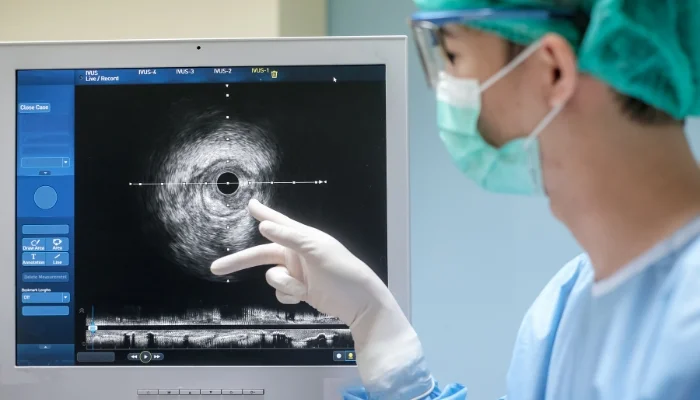Cardiovascular diseases (CVDs) are among the leading causes of death worldwide, and the early and accurate diagnosis of heart conditions is essential for effective treatment. Over the years, medical imaging technologies have played a crucial role in identifying and monitoring cardiac issues. One such technology that has evolved and gained prominence in the field of cardiology is advanced ultrasound, also known as echocardiography. This non-invasive, versatile, and efficient diagnostic tool has transformed cardiac diagnosis, providing clinicians with clear, real-time images of the heart’s structure and function.
In this article, we will explore how advanced ultrasound contributes to superior cardiac diagnosis, discussing its benefits, applications, innovations, and future potential.
1. The Evolution of Ultrasound in Cardiology
Ultrasound technology has been used in medicine for over half a century, but its applications in cardiology have expanded significantly. Traditional echocardiography, a basic form of ultrasound, offers two-dimensional (2D) imaging of the heart. While this was groundbreaking in its time, the development of advanced ultrasound techniques, such as three-dimensional (3D) echocardiography and Doppler imaging, has further revolutionized cardiac diagnostics.
3D echocardiography, for instance, provides detailed images of the heart, enabling doctors to view the organ from multiple angles and evaluate its chambers, valves, and blood flow in real time. Doppler imaging, on the other hand, allows physicians to assess the direction and velocity of blood flow, which is crucial for identifying abnormalities like valve disorders and blockages.
2. Key Benefits of Advanced Ultrasound in Cardiac Diagnosis
Non-Invasive and Safe
One of the biggest advantages of advanced ultrasound for cardiac diagnosis is that it is a non-invasive procedure. Unlike invasive diagnostic tools such as cardiac catheterization, ultrasound does not involve inserting instruments into the body. This makes it a safer option for patients, with minimal risks of complications. Additionally, ultrasound does not use ionizing radiation, which is used in other imaging methods like X-rays and CT scans, reducing the patient’s exposure to harmful radiation.
Real-Time Imaging
Advanced ultrasound provides real-time images of the heart’s anatomy and function, making it an ideal tool for assessing dynamic processes, such as the contraction of the heart muscle and blood flow through the chambers and valves. This real-time capability allows clinicians to make immediate and accurate diagnoses during the examination and adjust treatment plans if necessary.
Portable and Accessible
Portable ultrasound machines have become more common in healthcare facilities, allowing cardiologists to perform diagnostic imaging at the patient’s bedside. This accessibility is particularly important in emergency settings or in situations where transporting the patient to an imaging suite may not be feasible. Portable ultrasound devices enable quick, accurate, and immediate diagnosis, which is vital in life-threatening situations such as heart attacks.
Cost-Effective
Compared to other imaging modalities, such as magnetic resonance imaging (MRI) and computed tomography (CT) scans, advanced ultrasound is more cost-effective. It is often the first-line imaging choice for cardiac assessments due to its lower costs and faster availability. This cost-efficiency makes it a valuable tool in healthcare settings with limited resources, allowing broader access to quality cardiac care.
3. Advanced Ultrasound Techniques for Cardiac Diagnosis
Three-Dimensional Echocardiography (3D Echo)
3D echocardiography offers a comprehensive view of the heart by capturing images from multiple planes. This technique allows cardiologists to observe the heart’s structures with greater clarity and accuracy. It is particularly useful for assessing complex cardiac conditions such as congenital heart defects, valve disorders, and cardiomyopathies. The detailed visualization of the heart’s anatomy helps in pre-surgical planning, reducing the risk of complications during surgery.
Doppler Echocardiography
Doppler ultrasound is a vital tool for assessing blood flow and hemodynamics within the heart. It measures the velocity and direction of blood flow, providing insights into the function of the heart valves and the presence of abnormal flow patterns, such as regurgitation (backflow) or stenosis (narrowing) of the valves. Doppler echocardiography is essential for diagnosing conditions like mitral valve prolapse, aortic stenosis, and hypertrophic cardiomyopathy.
Strain Imaging
Strain imaging is an advanced technique that evaluates the deformation (strain) of the heart muscle during contraction and relaxation. This method is particularly useful for assessing myocardial function, especially in patients with heart failure or cardiomyopathies. Strain imaging can detect subtle changes in heart muscle function that may not be visible on standard echocardiography, making it a valuable tool for early detection of cardiac dysfunction.
Contrast Echocardiography
In some cases, standard echocardiography may not provide clear enough images, particularly in patients with obesity or lung disease. Contrast echocardiography involves injecting a contrast agent (a harmless gas-filled microbubble solution) into the bloodstream to enhance the quality of the ultrasound images. This technique improves the visualization of the heart’s chambers and blood flow, aiding in the accurate diagnosis of conditions like heart failure, left ventricular hypertrophy, and ischemic heart disease.
Transesophageal Echocardiography (TEE)
Transesophageal echocardiography (TEE) is a specialized form of echocardiography that involves inserting a probe into the esophagus to obtain detailed images of the heart. This approach provides clearer images than standard transthoracic echocardiography (TTE), especially for assessing structures such as the atria, valves, and aorta. TEE is commonly used during heart surgery to monitor cardiac function and guide surgical interventions.
4. Common Applications of Advanced Ultrasound in Cardiac Diagnosis
Coronary Artery Disease (CAD)
Advanced ultrasound techniques, such as Doppler imaging and strain imaging, are instrumental in diagnosing coronary artery disease (CAD). By evaluating blood flow and myocardial function, these tools help identify areas of the heart that may be experiencing reduced blood flow due to blocked or narrowed coronary arteries. Early detection of CAD through ultrasound can prevent further progression of the disease and reduce the risk of heart attacks.
Heart Valve Disorders
Heart valve disorders, including mitral regurgitation, aortic stenosis, and tricuspid insufficiency, can be accurately diagnosed with 3D echocardiography and Doppler imaging. These techniques allow for a detailed assessment of valve structure and function, enabling clinicians to determine the severity of the condition and plan appropriate treatment, whether through medication, valve repair, or replacement surgery.
Congenital Heart Disease
Congenital heart defects, such as atrial septal defects, ventricular septal defects, and patent ductus arteriosus, can be visualized in detail using advanced ultrasound techniques. 3D echocardiography is particularly useful in assessing complex congenital defects, guiding surgical interventions and monitoring long-term outcomes.
Heart Failure
Patients with heart failure often have reduced cardiac function, which can be evaluated using strain imaging and Doppler echocardiography. These techniques provide insights into the heart’s pumping efficiency and blood flow dynamics, helping clinicians tailor treatment plans to improve heart function and alleviate symptoms.
Atrial Fibrillation and Stroke Risk
Atrial fibrillation (AF) is a common cardiac arrhythmia that increases the risk of stroke. Transesophageal echocardiography (TEE) is often used to assess the left atrium and left atrial appendage, where blood clots can form in patients with AF. By identifying clots or abnormal blood flow patterns, TEE helps in stroke prevention strategies, such as anticoagulant therapy.
5. Innovations in Ultrasound Technology
AI-Enhanced Ultrasound
Artificial intelligence (AI) is making significant strides in enhancing ultrasound technology. AI algorithms can assist in image interpretation, improving the accuracy and speed of diagnosis. AI-driven software can analyze large volumes of ultrasound data, identify patterns, and provide automated measurements of cardiac structures and function, reducing the time burden on clinicians and minimizing human error.
Fusion Imaging
Fusion imaging combines ultrasound with other imaging modalities, such as MRI or CT, to provide a more comprehensive view of the heart. This hybrid approach allows cardiologists to overlay real-time ultrasound images onto pre-existing CT or MRI scans, providing a more detailed assessment of the heart’s anatomy and function. Fusion imaging is particularly valuable for guiding complex procedures, such as transcatheter valve interventions.
Handheld Ultrasound Devices
Recent advancements in technology have led to the development of handheld ultrasound devices that are portable, affordable, and user-friendly. These devices, equipped with advanced imaging capabilities, allow healthcare providers to perform cardiac assessments in remote or resource-limited settings. Handheld ultrasound devices are transforming the way cardiac care is delivered, enabling earlier detection of heart conditions in underserved populations.
6. The Future of Advanced Ultrasound in Cardiology
As ultrasound technology continues to evolve, its applications in cardiac diagnosis will only expand. The integration of AI, machine learning, and cloud-based imaging platforms will enhance the precision, speed, and accessibility of cardiac ultrasound. Additionally, the development of portable and wearable ultrasound devices could enable continuous monitoring of heart function in real time, providing invaluable data for managing chronic heart conditions.
The future of advanced ultrasound holds great promise in improving the early detection and treatment of cardiac diseases, reducing the global burden of cardiovascular mortality, and enhancing patient outcomes.
Summary
Advanced ultrasound has revolutionized the field of cardiac diagnosis by offering non-invasive, real-time imaging with exceptional accuracy. Its ability to provide detailed information about the heart’s structure and function has made it an indispensable tool in the early diagnosis and management of various cardiovascular diseases. With continued technological advancements, ultrasound will remain at the forefront of cardiac care, driving superior patient outcomes and contributing to the fight against heart disease.

